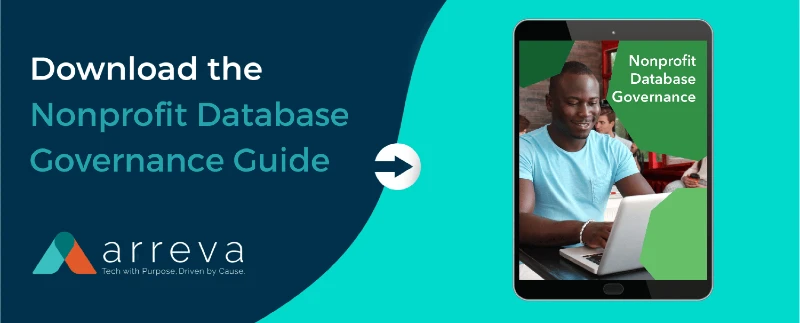Nonprofit Data Diaries Part 2: Accountability and Analysis

As our Chairman, Susan Orr, said in the first "Data Diaries" blog, "A focus on integrity will ensure that you can successfully build relationships with your constituents, that you can provide accurate information for decision making, and that your organization is accountable to your community." This applies not only to communication and solicitation but also to accountability and analysis.
Accountability addresses how confident your donors feel handing their sensitive information over to your nonprofit. High standards for accountability will increase the security of your data, thereby increasing your donors' trust in your organization.
Analysis, on the other hand, is there to help you and others working with your data. Building database rules with analysis in mind will help you gain better insights about your donors in the future.
Here are some things you should think about to keep accountability and analysis in mind when structuring your database:
Accountability
- Your procedures should include a workflow for processing donations. Your auditor can help with best practices for handling checks.
- Your rules for handling credit card data should include never storing credit card information in any system that is not PCI compliant and highly secure. In general, you should not store raw credit card information in your database system, and you should certainly not keep it in a spreadsheet or other unsecured document.
- Your accounting system should be keeping track of the various uses of your designated funds. Any restrictions on gifts need to be clearly communicated to the accounting system, and the system should be able to show that those funds were spent as intended.
- When a donor makes a pledge, it doesn’t do much good unless you are able to collect the payments as promised. This requires a clear system for tracking pledges, along with their expected payment schedules, and a procedure for reminding people to pay. Make sure to include a policy for writing off unpaid pledges. Don’t let unpaid pledge balances sit in your database, providing an inaccurate picture of your fundraising success.
- Your auditor may request reports from your database as well as from your accounting system. If you have entered your data consistently and accurately, you should have no trouble providing the requested information.
Analysis
- A major use of all this data is to inform decision-making. What fundraising approaches are most effective? How can we best move people up the donor ladder? Should we rethink our annual event? Who are our most likely campaign leaders? If you understand the questions you wish to ask before you enter the data, you’ll be in a much better position to answer them when the time comes!
- The reports from your data have many audiences besides the fundraising staff, including the board, the development committee, the CEO, CFO, and your auditor, to name a few. Make sure you consider all of these potential audiences when you build your data entry rules.
For each of these examples, along with others that you may wish to add, you should consider the following steps:
- Assign one person in your organization to be the database manager.
- Create policies and procedures for maintaining the integrity of your donor database. Write these down and keep them up to date.
- The procedures should include a complete list of codes and tags, along with the circumstances when they should be applied.
- Schedule regular training sessions during which the users of the database can discuss issues and work together to agree on best practices.
- Periodically review the needs of other constituents in your organization, like managers and board members, to ensure that they are able to access the information they need for decision-making.
Keep these pointers in mind when you are creating guidelines for your donor database. Your future self will be grateful that everything has been entered to be both accountable and ripe for analysis.
Bonus: Basic jobs of a database manager
- Develop policies and procedures for data entry to ensure data integrity.
- Develop workflows consistent with good accountability, both to donors and the organization. Examples include handling checks, acknowledging donations, reminding donors of pledge payment due dates, and stewarding restricted gifts.
- Maintain written documentation of policies and procedures, including rules for data entry.
- Monitor adherence to policies and procedures and make adjustments as necessary.
Read parts 1 & 3 of the Nonprofit Data Diaries now:


